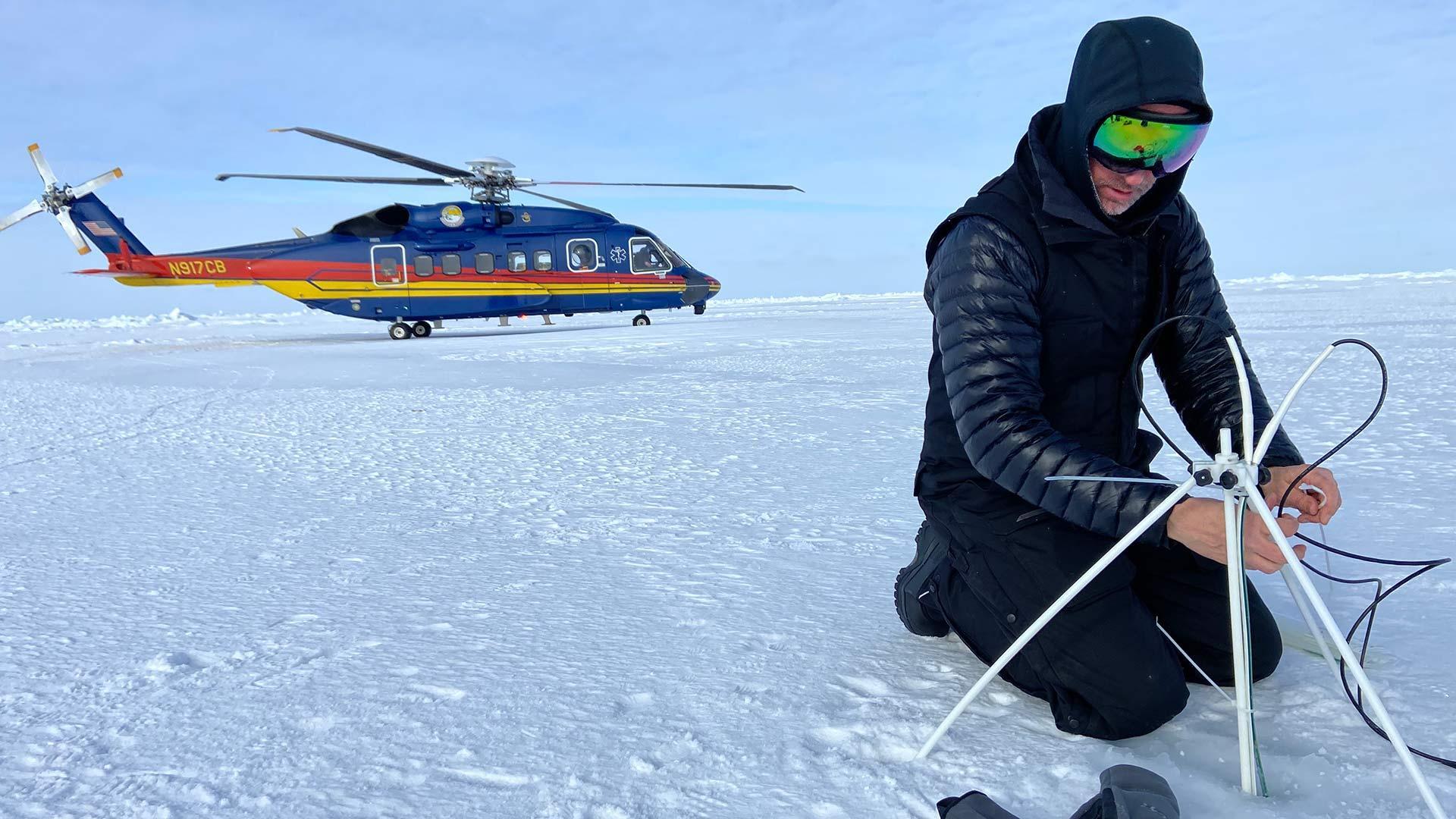
Photo by Kevin Allen
Images of massive chunks of ice collapsing from Greenland’s glaciers into the ocean have become emblematic of a changing climate and the need to drastically reduce global carbon emissions.
University of Maryland Assistant Professor of Art Cy Keener is working to characterize some of these icebergs—capturing their unique identities and the ways they change as they drift in the sea.
His collaborative “Iceberg Portraiture” series is part of an exhibition now on view at the National Academy of Sciences (NAS) in Washington, D.C., which Keener created with landscape researcher Justine Holzman, climatologist Ignatius Rigor and scientist John Woods. It’s the result of almost four years of trips to the Arctic in which they placed trackers onto the ice to collect data with the hopes of making that information tangible and visceral.
At NAS, the 7-foot-tall digital ink-and-pastel portraits provide a glimpse into the life of four icebergs with vastly different scales and shapes—some the size of a car and others a third of a mile wide—observed and recorded in August 2021 in western Greenland.
“Each of these [icebergs] is a piece of 10,000- to 40,000-year-old ice coming off the Greenland ice sheet into the ocean,” Keener said. “In this exhibition we understand them as living things, falling apart in front of your eyes, constantly changing. We show their diversity and beauty.”
Keener’s efforts began with the development of a low-cost, open-source buoy to collect meteorological and oceanographic data to use in his work. He first traveled to the Arctic in Spring 2019 with Rigor, a senior principal research scientist at the University of Washington and the coordinator of the International Arctic Buoy Program, whose members maintain a network of buoys across the expanse of the Arctic Ocean.
At VisArts Gallery in Rockville, Maryland, he and Holzman created “Sea Ice 71.348778º N, 156.690918º W,” an installation that used hanging strips of 6-foot-long, blue-green polyester film to reflect the thickness and color of the Arctic ice based on the buoy data.
He also created various versions of “Digital Ice Core,” a sculpture piece that used electronics, data and satellite communication to link a remote field site with a digital light sculpture, made up of 1,000 LED lights. Viewers were then able to see a recreated version of the ambient light in the air, ice and ocean in close to real-time.
In 2020, Keener received a $200,000 grant from the National Science Foundation to continue his work. And in Spring 2021, he spent nine days on a Danish navy ship on the west coast of Greenland.
In addition to the iceberg portraits, the NAS exhibition includes a continuation of Keener’s work to represent the thinning of sea ice. The nearly 8-feet-tall “Sea Ice Daily Drawings,” made of aluminum, acrylic, paper and ink, are based on some 27,000 data points that come from sensors buried meters into the ice. They show subtle temperature and color variation throughout a vertical profile of air, sea ice and ocean.
The drawings, while visually appealing, are yet another stark reminder of the inexorable changes occurring in the Arctic, Keener said: Before the 1980s, the surface of the Arctic Ocean was thoroughly covered with this thick, multi-year ice. Now it’s predicted to vanish by the middle of the century.
“As an artist, I get to go out there, be in this environment and stand on this ice before it disappears, and then try to bring life to that through installation, drawing and sculpture,” Keener said. “I’m using data not to get more statistics, but to make these things that are on their way out physically real—to extend the experience through time and tell a longer story.”
This story originally appeared in Maryland Today. Written by Jessica Weiss ’05.
